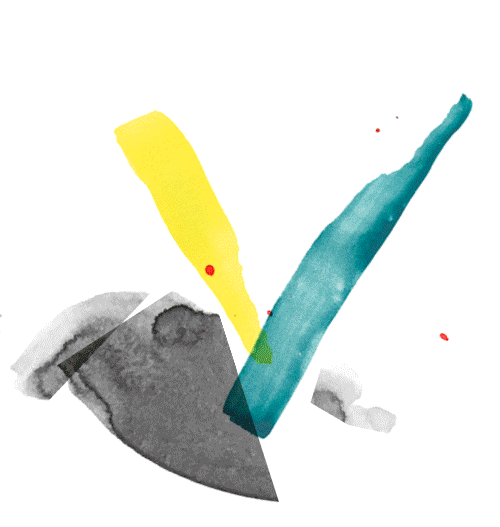

Sign up for our newsletters. You can change the settings or unsubscribe at any time.
Thank you for your subscription. We have sent you an e-mail with a confirmation link.


exp. 1
exp. 2
exp. 3

Léo Corrêa
Was part of: exp. 1
Léo Corrêa
Lives and works in Rio de Janeiro, BR
On September 2, 2018, a fire razed the oldest scientific institution in Brazil to the ground. Thoroughly neglected and underfunded by government authorities for years, the Museu Nacional da Universidade do Rio de Janeiro, associated with the Federal University of Rio de Janeiro, was considered among the most important museums of natural history and anthropology in the Americas. In what way does such a fire mobilize our unconscious? How does it shape our imagined futures? The blaze ravaged not only the historical building but more devastatingly destroyed a still unknown yet significant amount of the twenty million objects held within. The widespread destruction caused irreversible damage to the museum’s documentary collections, including ethnological artifacts of the original inhabitants of the region, and recordings of languages no longer spoken. The Bendegó meteorite is among the very few survivors of the catastrophe.
A Moment of True Decolonization / Episode #6: Sinthujan Varatharajah. Constructing the Tamil Eelam State
The Funambulist / Sinthujan Varatharajah
Podcast
New Look
Flávio de Carvalho
Performance
Flávio de Carvalho: Fazenda Capuava
Archive of Lisette Lagnado
Photographs
Weaving Solidarity
Renata Cervetto and Duygu Örs
Q&A
Hatred Among Us
Lisette Lagnado
Essay
COVID-19 VIDEOS
Carlos Motta
Video
By using this website you agree to the use of cookies in accordance with our data privacy policy.

Léo Corrêa
Was part of: exp. 1
Léo Corrêa
Lives and works in Rio de Janeiro, BR
On September 2, 2018, a fire razed the oldest scientific institution in Brazil to the ground. Thoroughly neglected and underfunded by government authorities for years, the Museu Nacional da Universidade do Rio de Janeiro, associated with the Federal University of Rio de Janeiro, was considered among the most important museums of natural history and anthropology in the Americas. In what way does such a fire mobilize our unconscious? How does it shape our imagined futures? The blaze ravaged not only the historical building but more devastatingly destroyed a still unknown yet significant amount of the twenty million objects held within. The widespread destruction caused irreversible damage to the museum’s documentary collections, including ethnological artifacts of the original inhabitants of the region, and recordings of languages no longer spoken. The Bendegó meteorite is among the very few survivors of the catastrophe.
„Klaus Eckschen: Hörspiel“
Die Remise
Hörspiel
Being in Crisis together – Einander in Krisen begegnen
Feminist Health Care Research Group (Inga Zimprich/Julia Bonn)
Online workshop
Solidarity and Storytelling. Rumors against Enclosure
María Berríos
Essay
Weaving Solidarity
Renata Cervetto and Duygu Örs
Q&A
Maternidades subversivas
María Llopis
Monograph
I: Junto a las curadoras de la XI Berlin Biennale for Contemporary Art
Renata Cervetto, Lisette Lagnado
Conversation
By using this website you agree to the use of cookies in accordance with our data privacy policy.

Léo Corrêa
Was part of: exp. 1
Léo Corrêa
Lives and works in Rio de Janeiro, BR
On September 2, 2018, a fire razed the oldest scientific institution in Brazil to the ground. Thoroughly neglected and underfunded by government authorities for years, the Museu Nacional da Universidade do Rio de Janeiro, associated with the Federal University of Rio de Janeiro, was considered among the most important museums of natural history and anthropology in the Americas. In what way does such a fire mobilize our unconscious? How does it shape our imagined futures? The blaze ravaged not only the historical building but more devastatingly destroyed a still unknown yet significant amount of the twenty million objects held within. The widespread destruction caused irreversible damage to the museum’s documentary collections, including ethnological artifacts of the original inhabitants of the region, and recordings of languages no longer spoken. The Bendegó meteorite is among the very few survivors of the catastrophe.
O Bailado do Deus Morto
Flávio de Carvalho
Play
New Look
Flávio de Carvalho
Performance
Flávio de Carvalho: Fazenda Capuava
Archive of Lisette Lagnado
Photographs
Maternidades subversivas
María Llopis
Monograph
COVID-19 VIDEOS
Carlos Motta
Video
Memorial to the Sinti and Roma Victims of National Socialism
Dani Karavan
Memorial
By using this website you agree to the use of cookies in accordance with our data privacy policy.

Léo Corrêa
Was part of: exp. 1
Léo Corrêa
Lives and works in Rio de Janeiro, BR
On September 2, 2018, a fire razed the oldest scientific institution in Brazil to the ground. Thoroughly neglected and underfunded by government authorities for years, the Museu Nacional da Universidade do Rio de Janeiro, associated with the Federal University of Rio de Janeiro, was considered among the most important museums of natural history and anthropology in the Americas. In what way does such a fire mobilize our unconscious? How does it shape our imagined futures? The blaze ravaged not only the historical building but more devastatingly destroyed a still unknown yet significant amount of the twenty million objects held within. The widespread destruction caused irreversible damage to the museum’s documentary collections, including ethnological artifacts of the original inhabitants of the region, and recordings of languages no longer spoken. The Bendegó meteorite is among the very few survivors of the catastrophe.
Struggle as Culture: The Museum of Solidarity, 1971–73
María Berríos
Essay
Hatred Among Us
Lisette Lagnado
Essay
Grupo Experimental de Cine en acción
Gabriel Peluffo
Drawing
Undocumented Rumours and Disappearing Acts from Chile
María Berríos
Essay
Feminist Health Care Research Group
Web archive
O Bailado do Deus Morto
Flávio de Carvalho
Play
By using this website you agree to the use of cookies in accordance with our data privacy policy.
By using this website you agree to the use of cookies in accordance with our data privacy policy.




